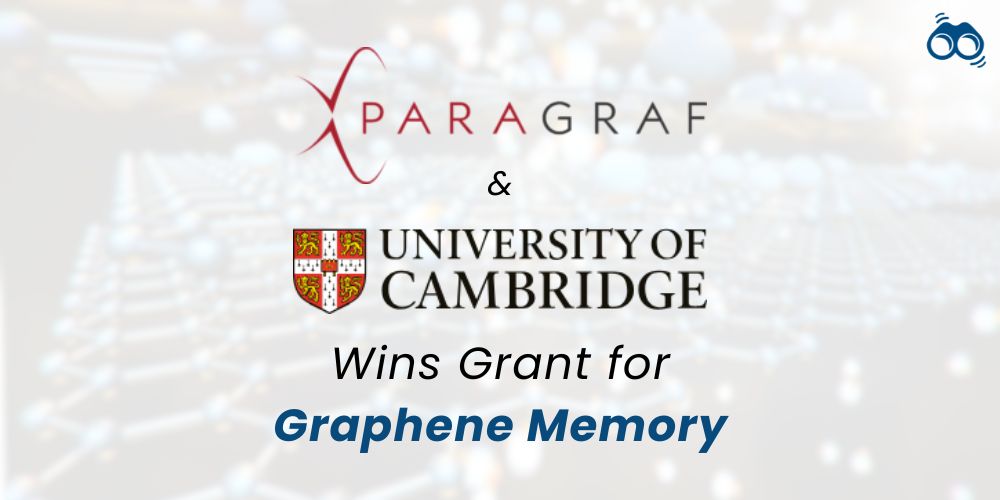Paragraf Pioneers Next-Gen Semiconductor Memory Devices with £419K Innovate UK Grant
Graphene and Ferroelectric Materials Combine to Create Groundbreaking Memory Technology
In a major development for semiconductor technology, Paragraf, a leading UK-based company specializing in graphene-based electronics, has been awarded a £419,419 grant from Innovate UK. This funding will support the creation of a proof-of-concept prototype for an advanced semiconductor memory technology, which combines ferroelectric materials with graphene on a silicon platform. The University of Cambridge’s Department of Materials Science and Metallurgy, led by Professor Judith Driscoll’s research group, will receive £299,198 to assist with this project. This collaboration is expected to lead to major advancements in semiconductor memory, enabling more efficient and powerful electronic devices.
The grant will help refine processes to integrate ferroelectric materials with Paragraf’s transfer-free graphene. Together, they will develop new memory devices, including a graphene-ferroelectric field-effect transistor (G-FeFET), which is expected to offer much greater power savings than current technologies. These advancements are essential for reducing energy use in data centres and consumer electronics, which will support the ongoing growth of artificial intelligence.
Paragraf’s graphene deposition technique was developed at the University of Cambridge, where CEO Simon Thomas conducted research under Professor Sir Colin Humphreys. After the company spun out from the university, it set up manufacturing sites in Somersham, Huntingdon, and San Diego. Paragraf is the first and only company in the world to offer scalable, high-performance graphene electronic devices for the sensors and diagnostics markets.
With these groundbreaking advancements, Paragraf and its collaborators are poised to revolutionize the semiconductor industry, driving both innovation and sustainability for the future.
Editor's Note:
This partnership between Paragraf and the University of Cambridge marks a significant milestone in the semiconductor industry. By combining the unique properties of graphene and ferroelectric materials, this project aims to transform semiconductor memory technology. The development of graphene-ferroelectric field-effect transistors (G-FeFETs) promises to achieve remarkable power savings, which are crucial for reducing energy consumption in data centres and consumer electronics. As the world becomes increasingly reliant on data and artificial intelligence, these advancements are more important than ever. The potential to reduce energy use not only supports global sustainability efforts but also opens the door to the next wave of technological progress. This is not just an incremental improvement but a significant leap forward that will make electronic devices more efficient, powerful, and environmentally friendly.
According to Skoobuzz, with this research, the future of semiconductor technology is brighter than ever.














0 Comments (Please Login To Continue)